Hindi is one of the two official languages of India (alongside English). It's integral to the country's history, literature, and identity. Spoken by over 600 million people and originating from ancient Sanskrit, Hindi would develop into one of the most widely spoken and influential languages in the world. Let's explore it.
Key Takeaways
- Hindi traces its origins back to ancient Indo-Aryan languages like Sanskrit, through intermediaries such as Prakrit and Apabhramsha.
- Major historical influences include Persian, Arabic, and Turkic languages during the medieval era, shaping the emergence of Hindustani and later Modern Hindi.
- Modern Hindi was standardised during Britain’s colonial period and post-independence India, becoming one of the country’s official languages.
- Today, Hindi is spoken by hundreds of millions worldwide, uses the Devanagari script, and continues to evolve through digital media and global diaspora.

Origins of Hindi
You can trace the origins of the Hindi language back several millennia to the ancient Indo-Aryan languages of northern India. Communities were developing along the Ganges plains, and Sanskrit became the foundation for many regional languages. Over time, through simplification, adaptation, and contact with other cultures, it would become the language we know as Hindi today.
Following only Mandarin, Spanish and English, Hindi ranks as the fourth most commonly spoken language in the entire world.
Sanskrit Roots
In terms of Hindi language history, Sanskrit is key. This is one of the oldest languages in the world and a cornerstone of many Indo-European languages. It's used in the sacred Hindu texts like the Rigveda as early as 1500 BC and provided the grammatical framework and vocabulary for countless Indian languages. As the centuries passed, Sanskrit evolved into its Classical form, which is used today in education, philosophy, and literature across the Indian subcontinent. As dialects diversified, Sanskrit remained the symbol of scholarship and spirituality.
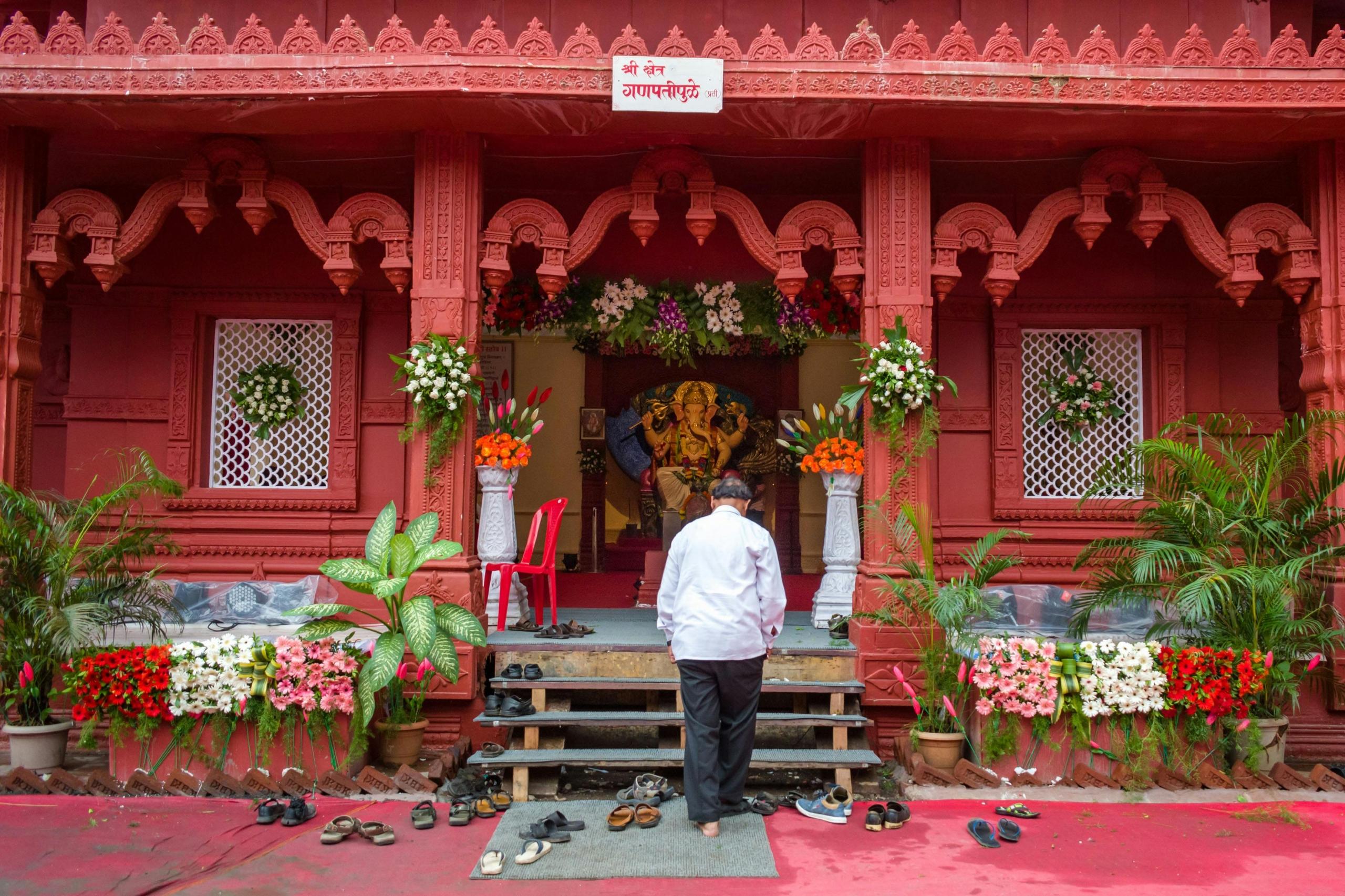
Transition through Prakrit and Apabhramsha
Between around 500BC and 800AD, everyday speech across northern India began to drift from classical norms, leading to what linguists call Prakrit languages. These were simpler, more flexible forms of Sanskrit, reflecting how people spoke. Shauraseni Apabhramsha, spoken in north-central India, played a vital role in shaping the future of Hindi.
Many modern Indian languages — including Hindi, Bengali, and Punjabi — evolved from Sanskrit through Prakrit and Apabhramsha. Their shared ancestry explains why speakers can often recognise familiar words across these languages.
Regional variations of Apabhramsha developed in cities such as Delhi, Agra, and Kannauj, creating the linguistic environment for Hindi to emerge. By the 11th and 12th centuries, these dialects had diverged into distinct forms and the early versions of Khari Boli, Standard Hindi's direct ancestor.
Development of Hindi Over Centuries
The Hindi Language moved beyond its ancient foundations into a period of intense change. These changes were influenced mainly by politics, religion, and trade. During the medieval era, India's northern regions came under new rulers and empires, leaving linguistic traces that shaped how the language was spoken. This is when Hindi began absorbing foreign vocabulary and forming its distinct character. When Sanskrit-derived dialects interacted with Persian, Arabic, and Turkic languages, change was accelerated. This led to the emergence of Hindustani, a bridge language spoken across India, which gave rise to modern Hindi and Urdu.
Medieval Period
The medieval development of Hindi occurred under the Delhi Sultanate (1206-1526), when Persian became the court language and mingled with the local vernaculars of north India. Of course, the Hindi language also influenced other languages. This enriched the vocabulary, particularly in areas like administration, art, religion, and everyday life. During the Mughal Empire (1526-1857), this became Hindustani, the language of trade, poetry, and government. This would lead to the evolution of Hindu and Urdu side by side. Each had distinct writing systems, but shared grammar and much of their core vocabulary.
British Colonial Era
During the British colonial rule in the 18th century, the history of the Hindi language would reach a crossroads. English was the language of administration, education, and trade, while Hindi was being standardised and distinguished from Urdu. Scholars and reformers worked to replace Persian and Arabic vocabulary with Sanskrit-based alternatives, thereby creating a more "pure" literary form of Hindi.
By the late 19th century, Hindi was being promoted in schools, newspapers, and nationalist movements as the unifying symbol of Indian identity. The adoption of the Devanagari script by the Bihar government in 1881 was a significant milestone in formalising the language.
Hindi in the Modern Era
In the 20th century, Hindi went from a regional tongue to a recognised national and global language. With India's independence, Hindi was a key tool for unifying a linguistically diverse country while maintaining links to its national heritage. Modern Hindi reflects both continuity and change. While its Sanskrit foundations are clear, it continues to borrow from English and other languages to remain beneficial to a contemporary society. Millions of people outside India, from Mauritius to the United States, still use Hindi as a connection to their Indian roots.
Around 57% of the Indian population are able to converse in Hindi.
Post-Independence Standardisation
After independence in 1947, the Constitution of India established Hindi, written in the Devanagari script, as the official language of the Union of India, alongside English. There were committees set up to create uniform rules for grammar, orthography, and vocabulary, so that they could be consistently used in education, media, and administration.

Hindi's technical and academic vocabulary was expanded through Sanskrit-based words and institutions, such as the Central Hindi Directorate and universities across northern India, which led projects to promote Hindi literacy and research. The result was Hindi serving as a unifying language in a multilingual country.
Global Spread and Influence
The Hindi language travelled far beyond South Asia. With Indian migration, Hindi spread to Nepal, Fiji, Mauritius, South Africa, the United Kingdom, and North America. There are thriving Hindi-speaking communities around the world, and Bollywood films, television shows, and Hindi music have increased the language's recognition and appeal.
More than 600 million people speak Hindi as a first or second language, making it the third-most-spoken language globally after English and Mandarin. Its presence in education, media, and digital spaces continues to grow each year.

Linguistic Features of Hindi
So now we know where Hindi came from, let's see what became of the language. Hindi is a fascinating example of how a language can maintain an ancient grammatical core while modernising. From its distinctive Devanagari script to its gendered nouns, verb conjugations, and the subject-object-verb order, Hindi retains features from its Indo-Aryan origins.
According to Nations Online, 78% of Indians speak a language belonging to the Indo-European language family, to which English also belongs.
Script and Phonology
Hindi is written using the Devanagari script. This is derived from the ancient Brahmi script and is shared with other Indian languages such as Marathi and Sanskrit. This is a phonetic script, meaning each character closely corresponds to a spoken sound.
The phonology of Hindi is rich and rhythmic. The language has 10 vowels (5 short and 5 long) and 28 consonants, including retroflex sounds unique to South Asian speech. It also features sounds borrowed from Persian and Arabic, examples of cultural contact throughout its history.
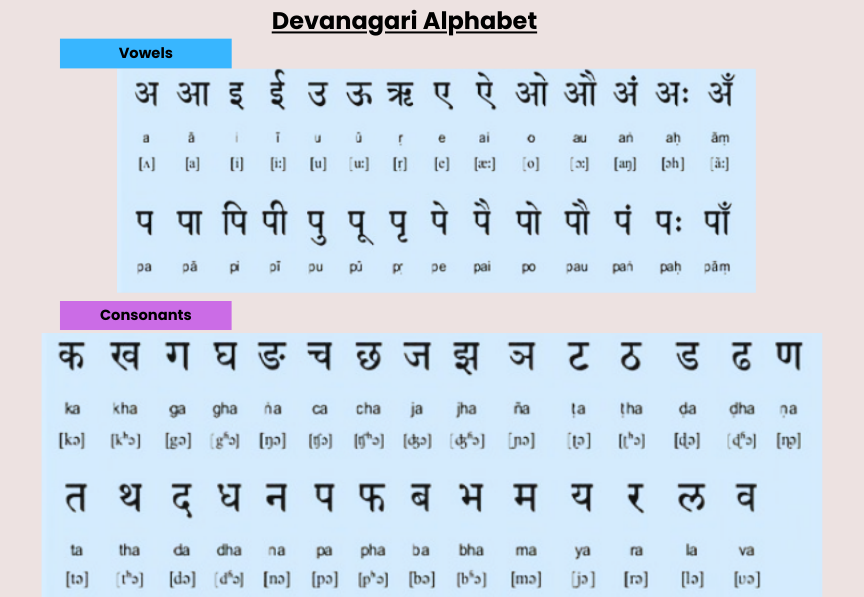
Grammar and Syntax
Hindi grammar uses a Subject-Object-Verb (SOV) order, which is common in Indo-Aryan languages. Unlike English, which uses prepositions, Hindi uses postpositions, placing relational words after the noun. Nouns and adjectives agree in gender, number, and case. Verbs are conjugated according to tense, aspect, and mood. While it may seem complex at first, it's a flexible and nuanced language.
Hindi includes 28 consonants inherited from Indo-Aryan tongues alongside additional consonants borrowed from languages like Persian and Arabic.
Regional Dialects and Variations
Since India is culturally and geographically diverse, Hindi has many regional varieties. Hindi dialects remain mutually connected, sharing the same grammatical foundation and much of their core vocabulary. The regional variations of Hindi show how languages evolve over space and time. Each dialect is part of the rich tapestry of the language.
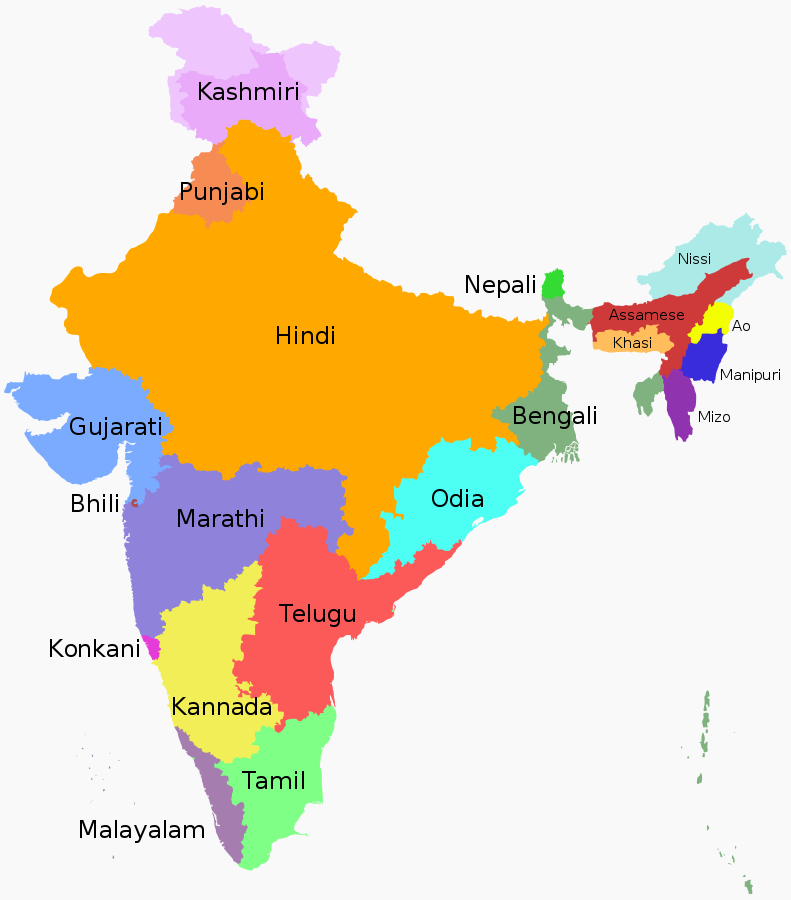
Major Dialects
Generally, linguists classify Hindi into Western and Eastern dialect groups. Western Hindi developed from the Shauraseni Apabhramsha variety, while Eastern Hindi came from Ardhamagadhi Prakrit. These broad groups can be divided into several others:
⬅️ Western Hindi
Evolved from the Shauraseni Prakrit in the Apabhramsha form. Includes
Hindustani (standardised forms of Hindi and Urdu), Braj Bhasha, Haryanvi, Bundeli, and Kannauji.
Eastern Hindi ➡️
Stems from the Ardhamagadhi form of Prakrit. Spoken across Uttar Pradesh, Bihar, Madhya Pradesh and Chhattisgarh.
Mutual Intelligibility and Differences
While many Hindi dialects may sound distinct, some are closely related. Those who speak Standard Hingi can follow a conversation in Awadhi or Braj Bhasha, even if certain expressions and accents differ. Migration and media have also made various dialects increasingly interconnected.
| Language | Number of Speakers | Region |
|---|---|---|
| Hindi & Urdu | 590 Million | Spoken across India, Nepal, Fiji, and among the Indian diaspora worldwide. |
| Bengali or Bangla | 205 Million | Mostly spoken in the state of West Bengal and part of Assam |
| Punjabi | 100 million | Spoken in the states of Punja, Haryana and Delhi, as well as much of Pakistan |
| Marathi | 75 million | Spoken in Maharashtra and Goa |
| Gujarati | 50 Million | Spoken in Gujarat and the federal (union) territories of Daman and Diu, Dadra and Nagar Haveli. |
| Bhojpuri | 40 million | Spoken in Uttar Pradesh, Bihar and Jharkhand |
| Maithili | 35 million | Spoken in Bihar and Jharkhand |
| Odia | 35 million | Spoken in Odisha, West Bengal, Jharkhand, Chhattisgarh and Andhra Pradesh |
| Marwari | 30 million | Spoken in Rajasthan, Gujarat and Haryana |
| Sindhi | 25 million | Spoken in Gujarat and Maharashtra and the Sindh province of Pakistan |
| Assamese | 24 million | Spoken in Assam (of tea fame) and Arunachal Pradesh |
| Rajasthani | 20 million | Spoken in Rajasthan, Madhya Pradesh, Gujarat, Punjab and Haryana |
| Rangpuri | 15 million | Spoken in Assam and West Bengal |
| Bishnupriya | 12 million | Mostly spoken in Assam and Tripura |
Hindi’s Influence on and Borrowings from Other Languages
The Hindi language has been brought into contact with many others. Through trade, empire, and cultural exchange, Hindi has been influenced by Persian, Arabic, Turkish, Portuguese, and English, and has also influenced other languages.
Loanwords in Hindi
Hindi's lexicon was particularly influenced during the Delhi Sultanate and Mughal periods. Thousands of everyday words like kitab (book), duniya (world), kursi (chair), shakkar (sugar), and paisa (money) are of foreign origin. Generally, necessity and exchange lead to the borrowing of words.
Hindi’s Impact on Other Languages
Conversely, Hindi left its mark on other languages. English alone has dozens of Hindi-derived words. These include bungalow, pyjamas, pundit, juggernaut, and curry. All of these words are of Hindi origin. They entered English through colonial contact, travel, and migration.
Hindi Literature and Media
From spiritual poetry written centuries ago to modern cinema, Hindi has been used for storytelling, devotion, and cultural expression. It's part of India's artistic identity, and literature and media are two of the most powerful uses of the language. Hindi literature evolved through two distinct phases from devotional Bhakti to socially conscious works in the 20th century. Hindi cinema and television have helped the language reach far beyond its borders.
Classical and Modern Literature
The earliest examples of the Hindi literary tradition can be seen in medieval poetry. Writers like Tulsidas, who composed the Ramcharitmanas in Awadhi, and Kabir, blended Hindu and Islamic thought, using Hindi to reach people in their own tongue. Authors like Munshi Premchand in the modern era wrote realist novels about rural India, while Harivansh Rai Bachchan wrote poetry exploring love and identity.
“Literature is the mirror of society.”
Munshi Premchand
Hindi in Film and Television
Hindi gained a new platform with the advent of film in the 20th century. Bollywood helped make Hindi one of the most recognisable languages in global entertainment. Films such as Sholay, Dilwale Dulhania Le Jayenge, and Lagaan helped spread Hindi words, idioms, and expressions worldwide. Bollywood's blend of Hindi and Urdu vocabulary, known as Hindustani, helped it connect with audiences across India, Pakistan, and the wider diaspora.
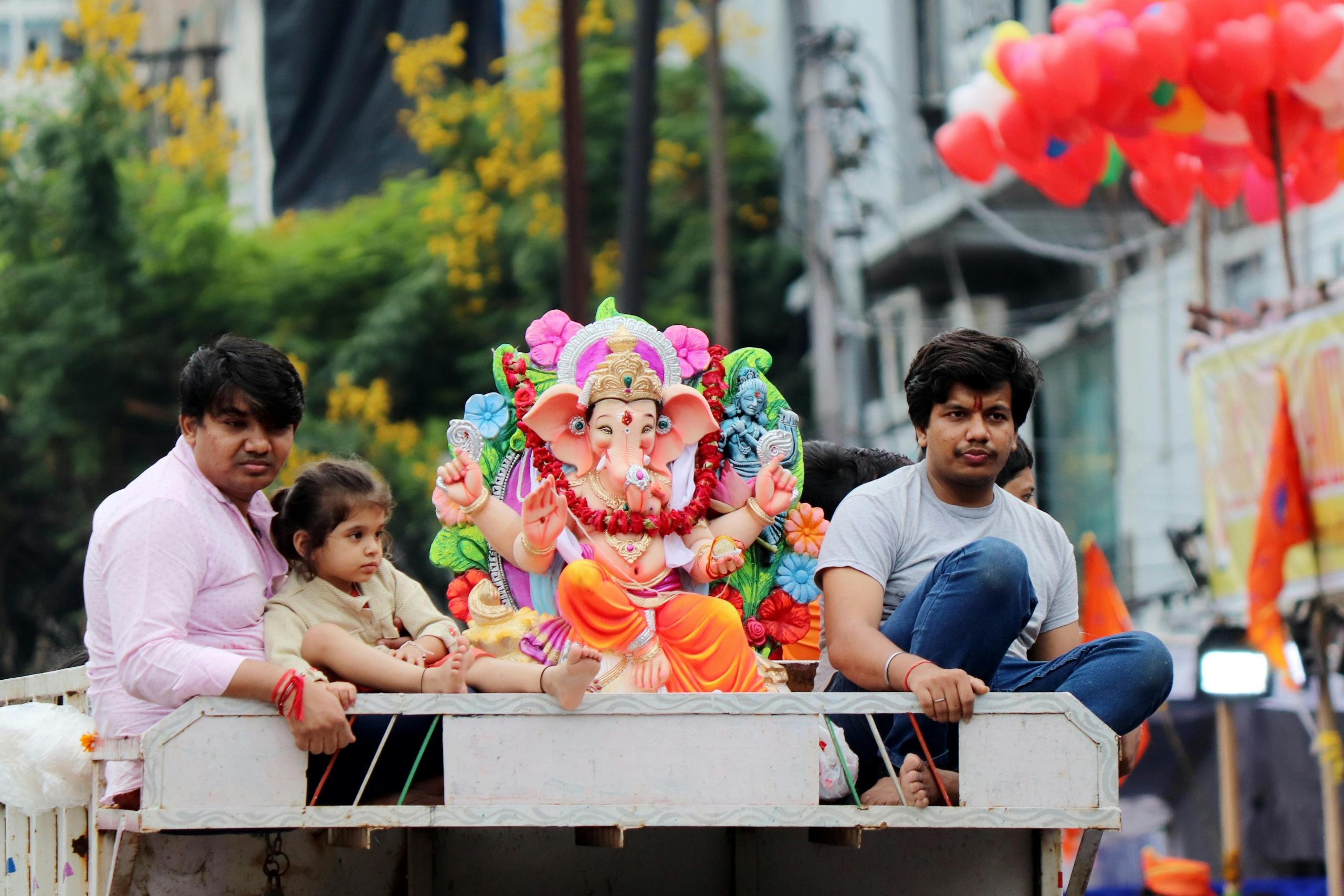
Challenges and Preservation Efforts
Like any language, the Hindi language faces challenges. With English dominating education, business, and digital spaces, Hindi is sometimes overshadowed, especially among younger speakers. Luckily, Hindi language preservation and promotion are ongoing.
Language Preservation
In India, preserving the Hindi language is a national and cultural priority. Institutions like the Central Hindi Directorate and the Hindi Akademi organise literary festivals, translation projects, and educational programmes to promote reading and writing in Hindi. Hindi's also taught internationally in universities from London to Tokyo.
Technological Integration
Modern technology has greatly helped Hindi. With the adoption of Unicode and the growth of digital content, Hindi is used in websites, apps, and social media platforms. Major technologies include Hindi interfaces, speech recognition, and AI translation tools, which help the language to survive.
Hindi is now among the top five languages used on the internet, reflecting the growing number of users accessing news, education, and entertainment in their native tongue.

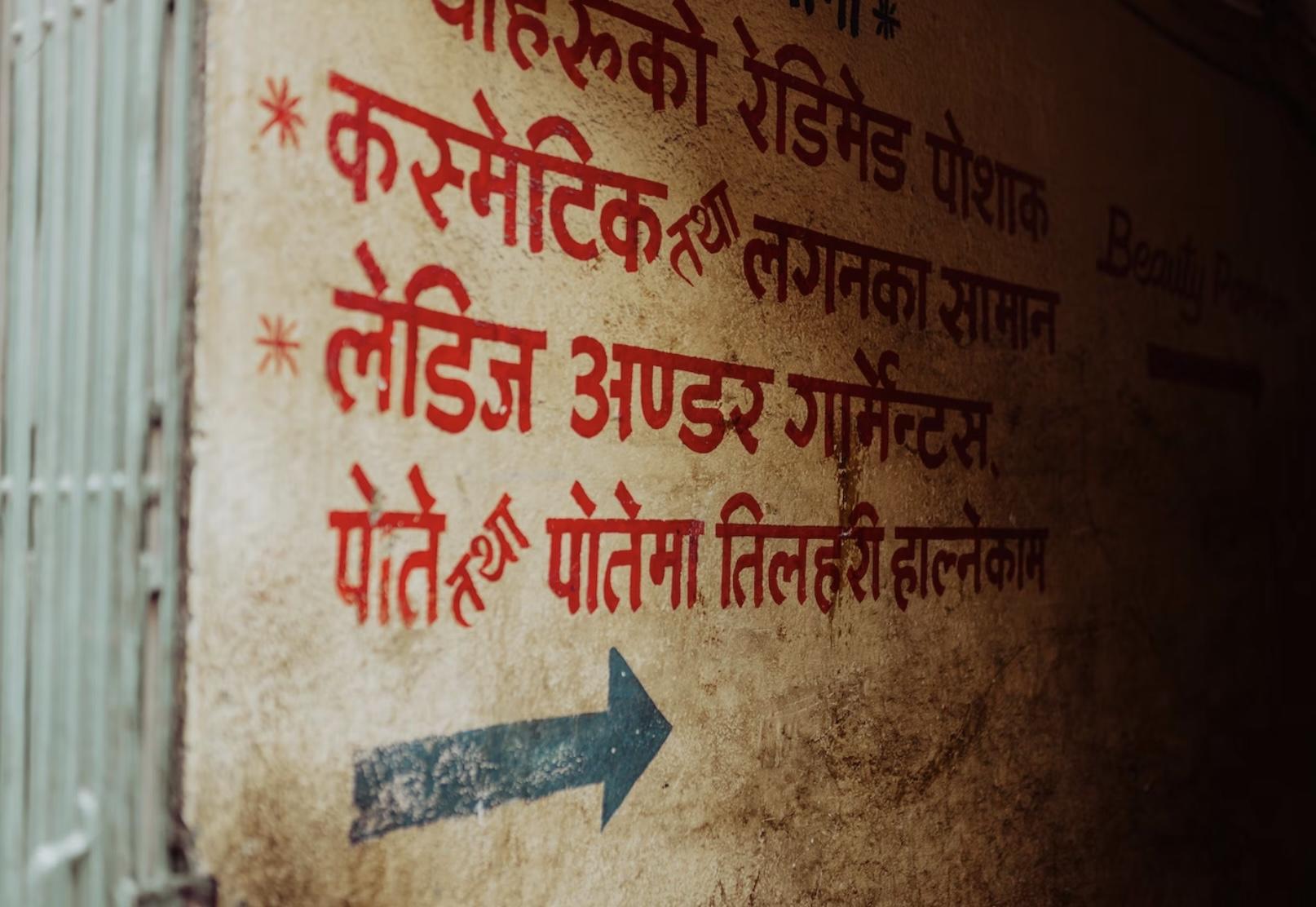














The article is very fine. but i need references
I’m glad you liked it – most of the information is taken from the links provided. We don’t offer scientific research articles on this site, but introductory pieces to provide some basic info. If your research should turn up anything interesting or contradictory, you’re welcome to let us know!
Latest Research (2019) on Linguistics have provided More Clarification on the Fact that Sanskrit is a language of Brahmins who Migrated to India From Europe and that slavic Brahmins did not* travel to Iran or Persia so Genetically were not related to Aryans who were Persians. So Brahmins or their language cannot be classified as Aryan as Brahmins were Purely European* and there fore their language too landed as pure European. Due to these Europeans Copying* All* Indian Linguistic not just one just to make all Indians feel that they have a upper hand just to make Sanskrit look primitive… misusing Indians Innocence used spiritual loop holes and India being Multi lingual …it was easy as Sanskrit was never a spoken language but only in script to act as if Sanskrit is mother of Any Indian lanuage….How can a non*spoken* foreign language ever be a mother or Origin point of any Indian language.? To have power to influence first it should have been in use/spoken language. Prakrit alone influenced Hindi.
Hindi has been clubbed with Urdu to “claim” its majority, mainly for political purposes. The bare fact is that Hindi is the sole language of the Hindi heartland ONLY, which happens to be central Uttar Pradesh. Madhya Pradesh is dominated by several tribal languages, which are indeginous to itself. Rajasthani is the native tongue of Rajasthan. So this RJ & MP may be excluded from the region shaded in the map under “Hindi-land”. Going by recent statistics, it will be found that Bengali & Telugu are good contenders for the most popular language of Indian origin, however, since they don’t enjoy political patronage, right from the British period, this fact will be shrouded in political intention. The literature of these two are richer than Hindi, whose only protagonist is the Bollywood lobby,only for business purposes and literary & creative contribution is negligible, since Bollywood thrives in shameless plagiarism of Hollywood, without attempts at genuine creativity. In order to really catapult Hindi to its intended popularity, the Hindi protagonists may be humbly urged to nurture their creativity in ALL fields, e.g. technical also, rather than cracking the political ringmaster’s whip while forcibly imposing it on all Indians (esp south) with much non-value added expenditure in its popularising through bribery in the form of prizes & incentives or utter persuation, solely for political hegemony. A little creativity is humbly & respectfully urged in popularising it without opposition, which could then be pleasurably enjoyed rather than painfully endured.
Relatively true narrative on Hindi and Urdu. The predominant languages with historical literature evidence is Sanskrit and Tamil as contemporary languages. Sanskrit the Indo-Aryan from where the European languages originated later on with mix of later persian.
Tamil the predominant Dravidian language, has lierature evidence as old as Sanskrit with current evidence still available from 500BC on words but may older as a coin from Indus valley was found to have a Tamil letters indicating migration of Dravidians from Indus gradually. Telgu comes soon after Tamil on lierature evidence but late because of influence of both Sanskrit and Tamil was strong.
The intersting fact is Sanskrit has faded but Tamil and Telgu as ister languages survive!!
Agree Totally. But what worried is these languages Hindi or Sanskrit(European) which even if pleasurably enjoyed is Turing to become painful after a decade when it’s been made compulsary for a Central Govt Job. Or KV education – These are Reasons why South Indians Asked for a Dravidian language too to be included as official language of India.But in vain till Date. Remember there are n number of official languages in Many Countries in the world.Why not India.
Very informative..keep up
It would be appreciated if Hindi is not thrust on South Indians as we speak good English which is international. Since Indians speak good English why are we killing it. Good jobs Indian and International require English. All Banks start of with Hindi and sadly the same person cannot speak English for nuts. Please don’t thrust the language on us.
It’s good to know the English language as it’s international but don’t you think hindi would extinct in no time which is our language. Our minds are already westernised and we’re totally shifting towards them , their thinking, everything theirs and in this we’re going to loose the Indian identity. Hindi keeps us together and we’re proud of it.
How I know the historical and scientific pali language?
In time of Tathagat Gautam buddha.
Very nice good luck
I landed here after reading a page (link posted on FB by one of India’s leading playback singer). The article is informative and loaded with facts, would just like to have the references for the same. Speaking my mind: To start with, nothing is absolute true, and history is always twisted and crafted. We read just the history what the people sitting on the apex of the pyramid wants us to read. We Indians have learnt and the same we have inherently in our blood, to respect every culture alike our own. But the politics being played even in the field of academics instigate our minds to pose differences and anti-feelings towards other cultures and beliefs. That is a different thing that we still live as one helping each other and crossing our paths. To be true enough, if we have to reach the root of any language then we have to work together as one unit, the team being driven by like minded people void of conflicts and differences. An alien unit cannot determine something which has got no stance, and sad thing is even some front-line citizens, so called rationals are following the articles and getting them posted. The irony is at a time, when everyone is living in an age of (technology) revolution, we are not evolving and still revolving around some baseless conflicts of our horrendous past. But at this point the catch is we should never forget the past but of course let it go. To speak aloud here, just like Latin called the mother of English, similarly Sanskrit and Prakrit are two languages which have determine the form of Hindi and given a touch to many more languages too. People are just a tough nut not to crack and just living with subsumed and already consumed brain.
Mind blowing account of history and development of Hindi language. I read whole article and hold my breath til the end! Great article!
Excellent article, i live in Trinidad. It cleared up a lot of misconception. Qu, where did Sánskcrit originate from. Is it a spoken language?
Good information about Hindi language.
The beauty & capacity to explain
by Hindi language should have been included.
It binds people of different regional areas.
However, good description.
Wish you all the best.
Good Information. Thank You.
Kannada ♥️
Hindi is not India’s official language.
No where mentioned in constituent as Hindi or any language as official language.
Hindi and English are the official languages of the Republic of India
Kannada speaker number is wrong. According to 2011 census there are 40.37 million (4.37 crore) kannada mother tongue speakers in india.
Quite informative.
Very informative..keep up
Place in me
Very good article. It’s so interesting.
Awesome
Great explanation. Thanks.
Urdu is Hindi written in Arabic script
It is as much an a indo european language as Hindi
Muslims try to monopolise it so they do not leave Arabic script and adopt devnagrhi script which would make it more popular. But then muslims will not have monopoly in jobs related with this language.
The history of the Hindi is:
1. Sanskrit
2. Prakrit
3. Hindi in the mixture of (Hindi, Khari Boli, Punjabi, Bhojpuri, Urdu, Persian and Marwari)
4. Original Hindi
very interesting and informative article. very much appreciate.